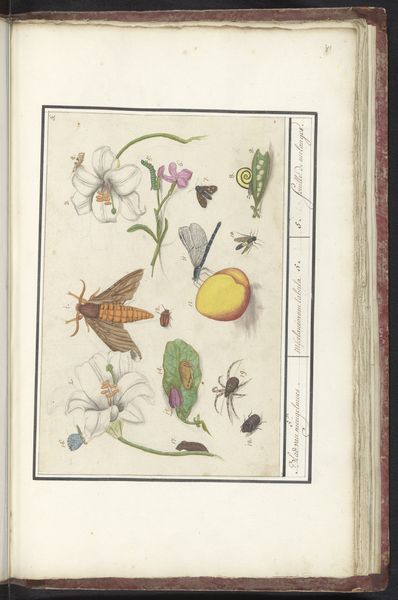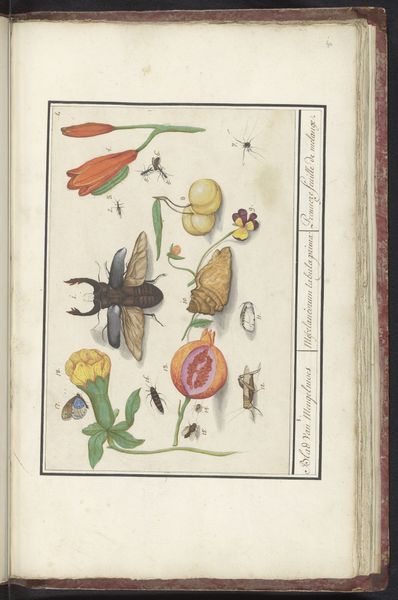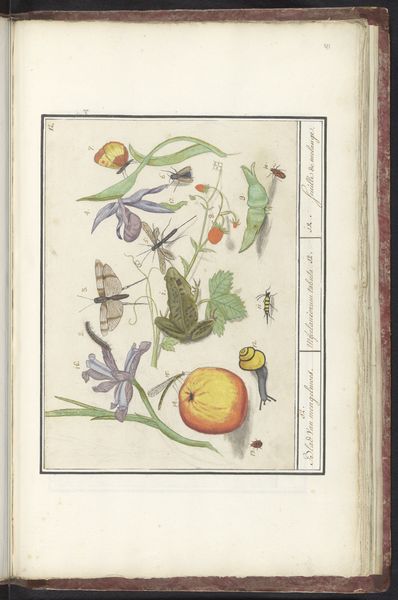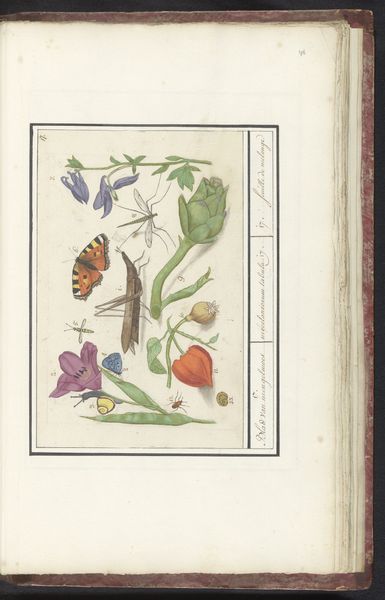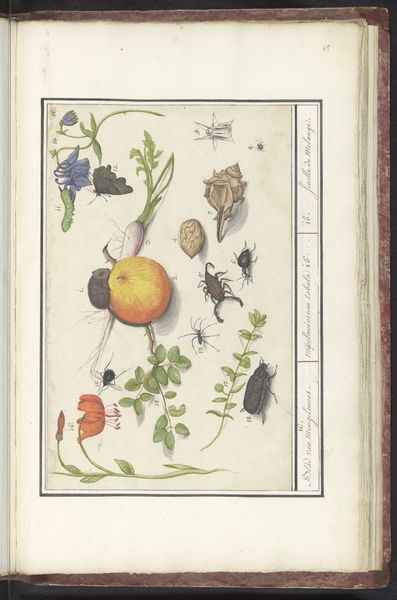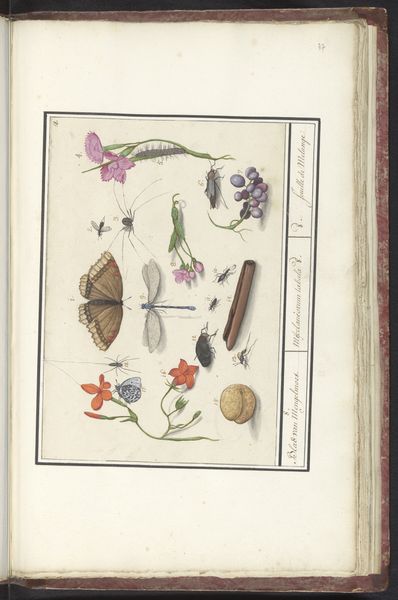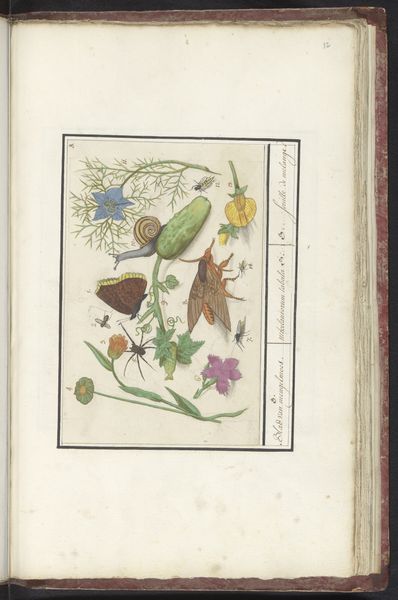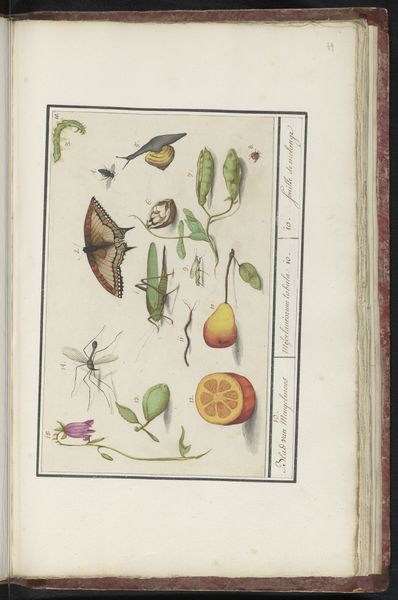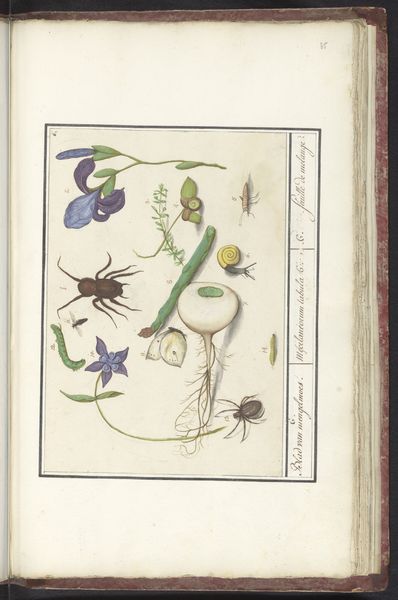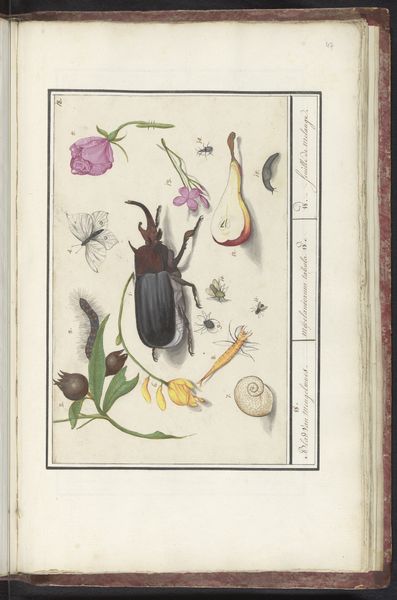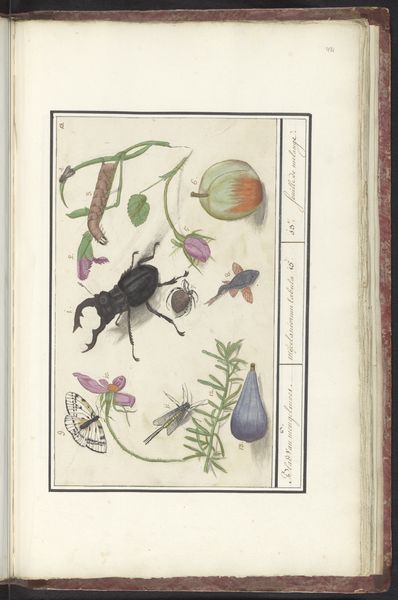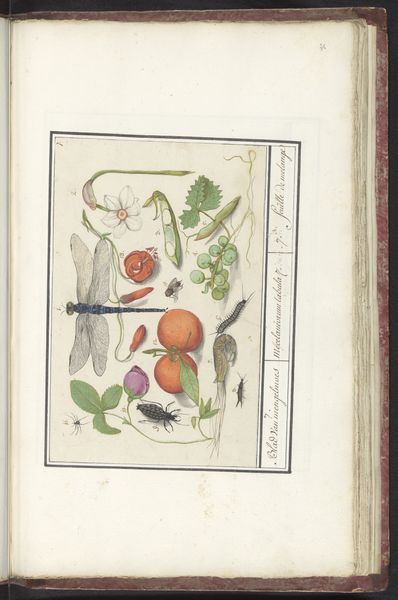
drawing, paper, watercolor
#
drawing
#
water colours
#
paper
#
11_renaissance
#
watercolor
#
coloured pencil
#
northern-renaissance
#
botanical art
#
watercolor
Dimensions: height 178 mm, width 256 mm
Copyright: Rijks Museum: Open Domain
Editor: Here we have a page from “Natuurhistorische ensemble (nr. 14),” a watercolor drawing created sometime between 1596 and 1610 by Elias Verhulst. The insects and plants are rendered with such detail; what stories do you see in these careful depictions? Curator: Consider how nature itself became a stage upon which deeper meanings were projected. This ensemble acts almost like a *vanitas* still life, even though it's rendered with scientific precision. Do you see how each element, while beautiful, whispers of fragility and change? The caterpillar morphing into a butterfly, the bloom destined to wither. Editor: Absolutely. It feels like a study in transformation and a subtle reminder of our own mortality. The colours, too, feel particularly significant – that vibrant orange fruit contrasting with the muted greens and blues. Curator: The choice of colour reinforces the concept. Think of alchemical traditions. The orange can signify transmutation. Consider this ensemble not just as an inventory of the natural world, but an encoded message about transformation of the self through understanding one’s relationship with nature. What do these minute studies reveal to you? Editor: That it is so rich with interconnected symbolism. Now I see not just pretty depictions, but emblems speaking to constant renewal. Curator: Exactly! It pushes us to ponder: What symbols would we choose today to represent the cycle of life in our time? Editor: Food for thought, really shifts perspective.
Comments
No comments
Be the first to comment and join the conversation on the ultimate creative platform.
